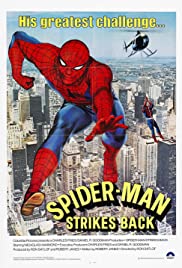Welcome to Retro Television Reviews, a feature where we review some of our favorite and least favorite shows of the past! On Tuesdays, I will be reviewing the original Fantasy Island, which ran on ABC from 1977 to 1986. The entire show is currently streaming on Tubi!
This week, Fantasy Island is all about confronting the mistakes of the past.
Episode 1.11 “Reunion/Anniversary”
(Dir by Allen Baron and John Newland, originally aired on April 29th, 1978)
Before I talk about the two fantasies in this episode, here’s a bit of trivia. This episode was originally intended to be the first episode of the series. That perhaps explains why it has a tone that is more similar to the original TV movie than to the more light-hearted episodes that followed. Just as in the made-for-TV movie, Mr. Roarke is a bit of an enigma in this episode, one who has little trouble manipulating his guests in order to get the results that he wants. This episode even ends with Tattoo saying, “Thank God,” and Mr. Roarke replying with a mysterious half-smile. Roarke isn’t quite as sinister as he was in the TV movie but he’s also not quite the cheery host that he would become in later episodes. Roarke, at one point, also mentions that he has people who research everyone’s fantasy before choosing whether to grant it. That’s certainly different from later episodes, in which the fantasies are apparently available to anyone who can pay or who has been lucky enough to win Roarke’s sympathy.
Of course, when it came time to air the first season of Fantasy Island, this episode got pushed back and it aired as the eleventh episode. As a result, it presents a bit of a change-of-pace from the episodes that aired the weeks before. One can only imagine how someone who decided to start watching the show because of the fantasy where Don Knotts played a private eye reacted to this episode, in which four guests were stalked by a murderer who wore giallo-style black gloves.
The guests being stalked by the murderer are Agnes (Pamela Franklin), Hannah (Hilarie Thompson), Carol (Michele Lee), and Jill (Sue Loyon). They are all members of the Honeybees, a group of former high school cheerleaders who are having a ten-year reunion. Their fantasy is to spend the weekend at a recreation of the Beehive, a cabin where they used to hang out while in high school. Of course, every one of them has a dark secret and, after one of the Honeybees is apparently blown up in a nearby barn, the three remaining Honeybees have to solve the mystery. It all gets fairly dark and sordid but, fear not! Mr. Roarke shows up and even takes part in some hand-to-hand combat before revealing the truth about what is going on at the Beehive.
(Again, this is not something that we would normally expect from Mr. Roarke.)
Meanwhile, troubled couple Toni (Lucie Arnaz) and Tom Elgin (Ronny Cox, looking slightly embarrassed) come to the island for their anniversary! Toni wants to relive the weekend that they got married, when they were still happy and before Tom became a drunk. All of their old friends are invited to the island and soon, Tom is flirting with another woman while Toni is flirting with another man. Mr. Roarke even invites Rev. Allen (Stuart Nisbet), the man who performed the original wedding ceremony. The reverend explains that, due to a mix-up at the licensing office, he wasn’t actually legally allowed to perform marriages when Toni and Tom get married so it turns out that Tom and Toni have been living in sin all this time! Now, Tom and Toni have to decide whether to get married for real or to go their separate ways.
I vote for separate ways, just because they really do seem to be miserable together. However, it turns out that Mr. Roarke has a plan to keep this awful couple together.
The decision to move this episode from the start of the season to the latter half was definitely a good one. It was probably a bit too dark and dramatic to really work as the premiere episode but, as the 11th episode, it provides a nice change-of-pace. After several comedic and somewhat shallow episodes, this episode emphasizes the dramatic side of Fantasy Island. In this episode, the ultimate lesson appears to be that fantasies are fun but that it’s far more important to deal with the real world. In other words, Fantasy Island is a nice place to visit but only Mr. Roarke and Tattoo should live there.







